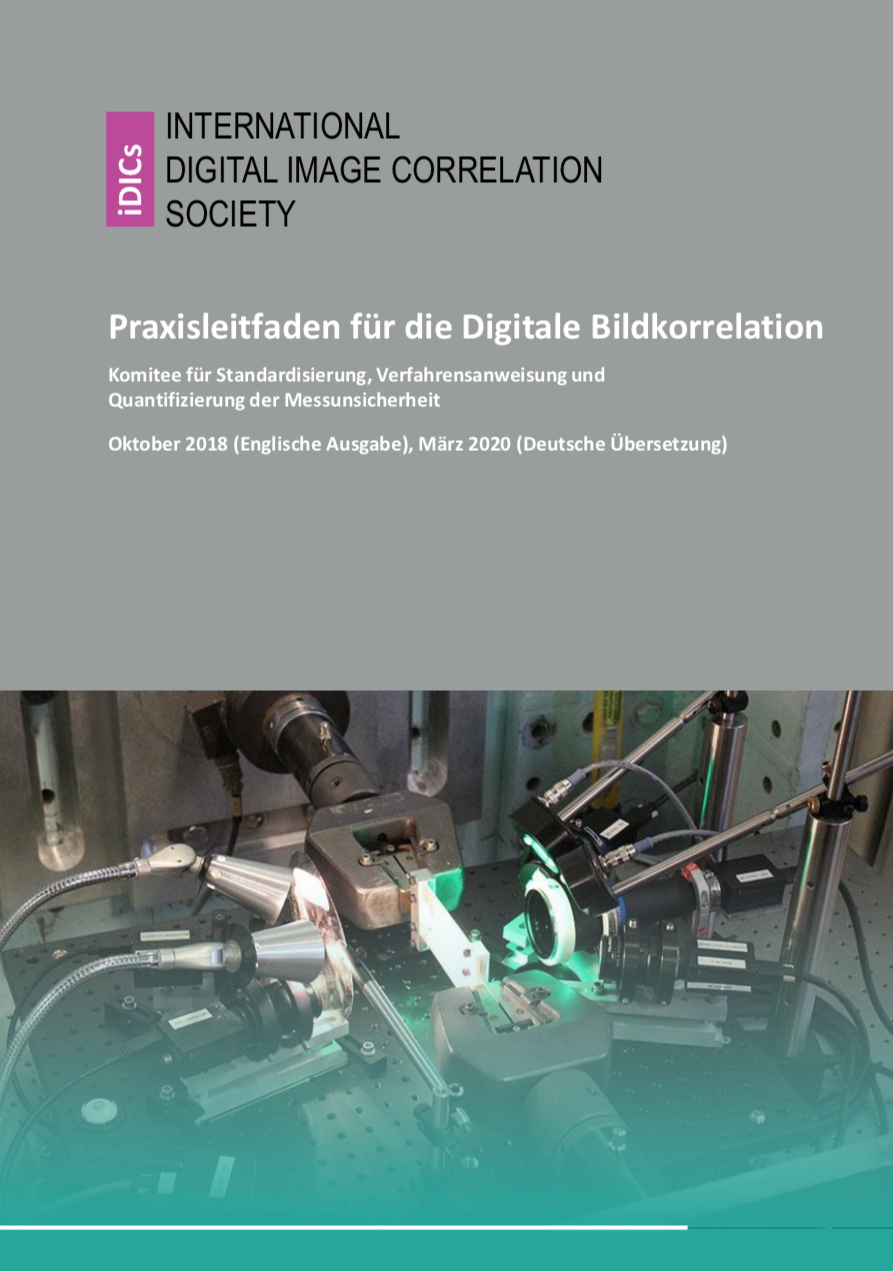Cited by:
(stats updated:
Electronic Version
The purpose of this document is to provide good-practice guidelines for conducting DIC measurements in conjunction with mechanical testing of a planar test piece. This guide is designed to be both a primer training document geared towards new practitioners of DIC (supplementing vendor-based or other formal training and hardware and software-specific documentation) as well as a reference for experienced users, to refresh their fundamentals knowledge and skill sets and assist them in troubleshooting DIC measurements. The Good Practices Guide (GPG) focuses on good practices for DIC measurement setup, image correlation, and basic post-processing of DIC data for strain computations. The scope of the current edition of the GPG is limited to common laboratory test conditions (which are outlined in the GPG). Our intention is to incorporate good practices for complex test conditions, and their associated additional challenges, in a future edition of the GPG.
The GPG is freely available to the public. It may be reproduced, distributed, or transmitted in any form or by any means, but only without alteration and with full attribution to the International Digital Image Correlation Society. Full copyright details are contained in the GPG.
How to Cite the Guide
Second Edition
International Digital Image Correlation Society, Jones, E.M.C. and Iadicola, M.A. (Eds.) (2025). A Good Practices Guide for Digital Image Correlation, Edition 2. https://doi.org/10.32720/idics/gpg.ed2.
First Edition available for download here
International Digital Image Correlation Society, Jones, E.M.C. and Iadicola, M.A. (Eds.) (2018). A Good Practices Guide for Digital Image Correlation. DOI: 10.32720/idics/gpg.ed1
Development of the Good Practices Guide
The GPG was developed by the iDICs Standards Committee. Details of the development and review process are summarized here and in this presentation. The working group on Good Practices, Reporting Requirements, and Terminology (a subset of the committee) developed the GPG. The working group was composed of expert DIC practitioners, including representatives from many commercial DIC software packages, with diverse experience using DIC in a myriad of applications.
After a final draft of the GPG was completed by the working group, a public comment period ocurred, during which any DIC practitioner could opt-in to review, comment, and vote on the GPG. The working group addressed each comment provided, either through revising the GPG, or through a written rebuttal. After that revision, the final version of the GPG and the working group responses to the comments were reviewed and approved by three of the iDICs Executive Board, who did not participate in either the working group or the public comment period.




